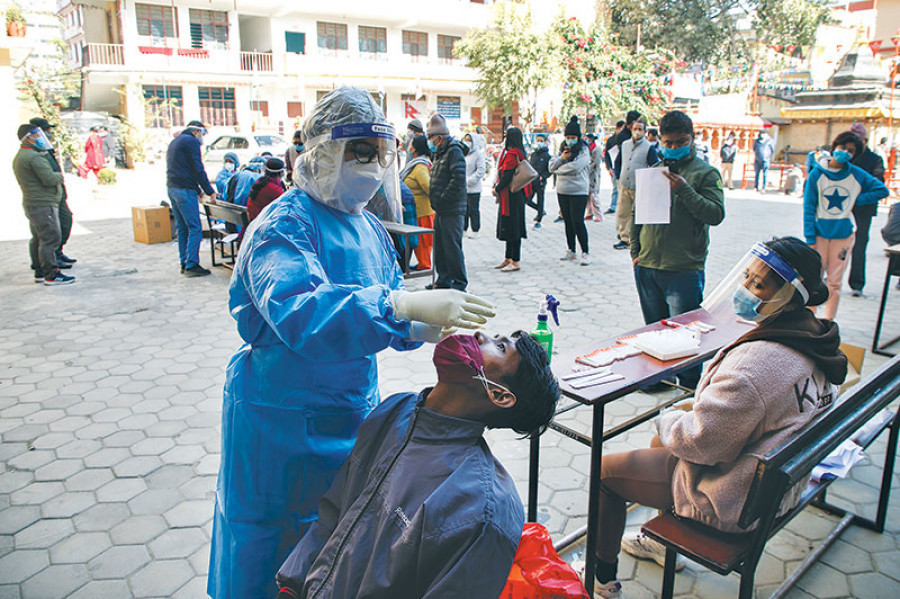Editorial
Red alert
The government has to stop waiting for things to turn worse and urgently prepare for a worst-case scenario.
The following nine weeks, warns the country’s director at the Epidemiology and Disease Control Division, Dr Krishna Paudel, will be challenging because of the new variants of the coronavirus infecting more people. On Wednesday, the Ministry of Health and Population reported over 2,000 new infections after reporting over 1,000 cases for three consecutive days. The second wave of Covid-19 grips the country, straining hospitals with patients requiring intensive care and ventilator support. The way things are, public health experts say, the worst is yet to come.
An additional 300,000 people could acquire the virus by July 15, and the daily cases could reach up to 11,000 as per the Health Ministry’s latest projection. If the new infections confirmed in the last four days indicate anything, our fragile health system, as witnessed in the previous year, is bound to face multiple and critical challenges. Infectious disease doctors say new infections in the country are increasingly symptomatic, which has led to an increased caseload for hospitals requiring oxygen support, but most hospitals treating Covid-19 patients do not have a ready supply of the life-saving gas.
Out of the 185 hospitals across the country, only 26 have oxygen plants, and not all are in operation. In India, people are pleading on social media for assistance in arranging beds, oxygen supplies and the antiviral drug Remdevisir as authorities scramble to manage the fast-spreading second wave of the coronavirus, which has overwhelmed its health system. An analysis of the trend of the daily new confirmed Covid-19 cases per million in Nepal and India shows that we are heading in the same direction and will develop a similar curve of new infections. A failure to ensure oxygen supply at hospitals, doctors say, will exacerbate the coronavirus death rate.
Of the allocated 1,167 ICU beds and 510 ventilators for Covid-19 patients across the country, 180 patients were receiving treatment at ICUs, and 47 others were on ventilator support as of Wednesday. In the Kathmandu Valley, which continues to report the highest number of daily cases in the country, 56 ICU beds and 31 ventilators are already occupied. Should and when the situation worsens, a bigger surge as estimated will outstretch the country’s hospital resources, and public health experts say many patients could die unnecessarily due to oxygen shortages. Oxygen therapy, according to doctors, can save a lot of lives, and a regular supply of the gas will be critical for the treatment of severe cases.
There will be several critical challenges ahead to respond to the deteriorating Covid-19 situation in the country. Health facilities are already seeing an increasing number of seriously ailing patients with the current stage of the outbreak while the actual number of infections could be 10 times more than what is being reported. If we continue to overlook science-guided measures to contain the pandemic, especially with a fast-spreading variant on the loose, test positivity rates will exceed the ministry’s projection, and that will be disastrous for a country like Nepal. Knee-jerk reactions after weeks of dithering have once again put the country in a perilous condition. The government has to stop waiting for things to turn worse and urgently prepare for a worst-case scenario.




 16.12°C Kathmandu
16.12°C Kathmandu












%20(1).jpg&w=300&height=200)

